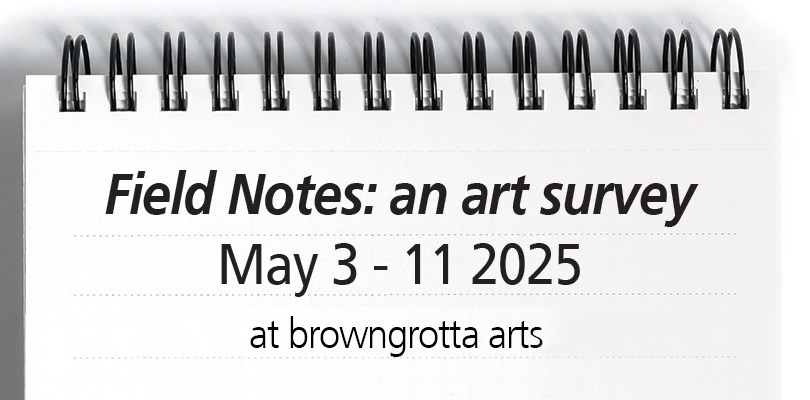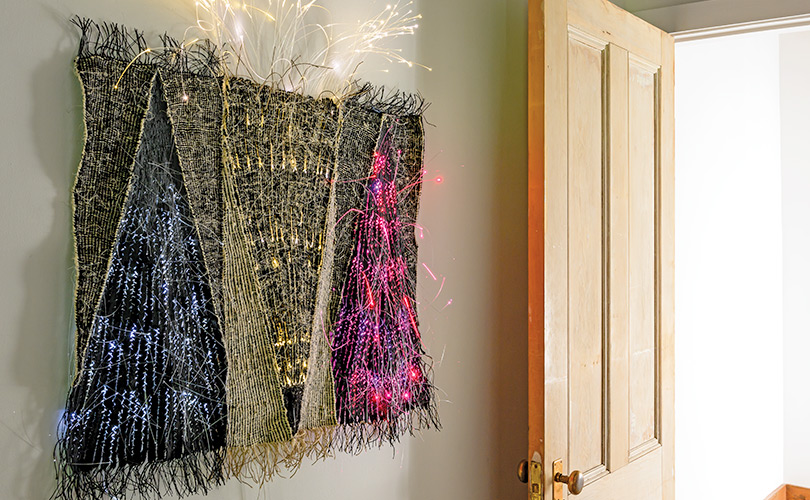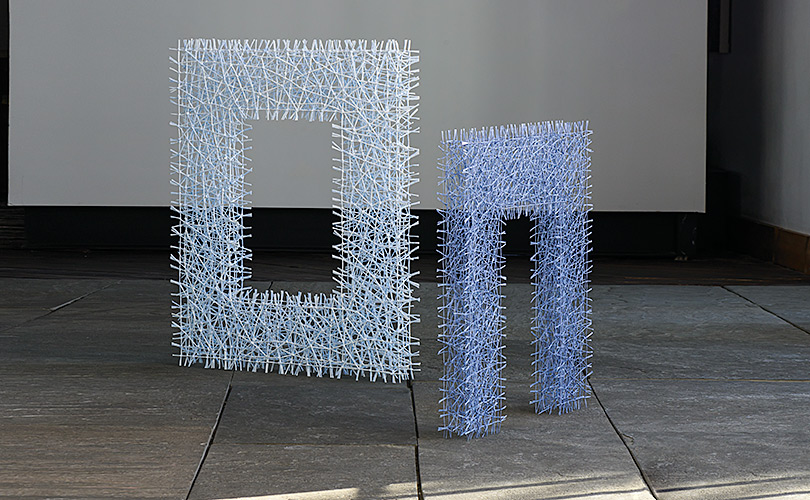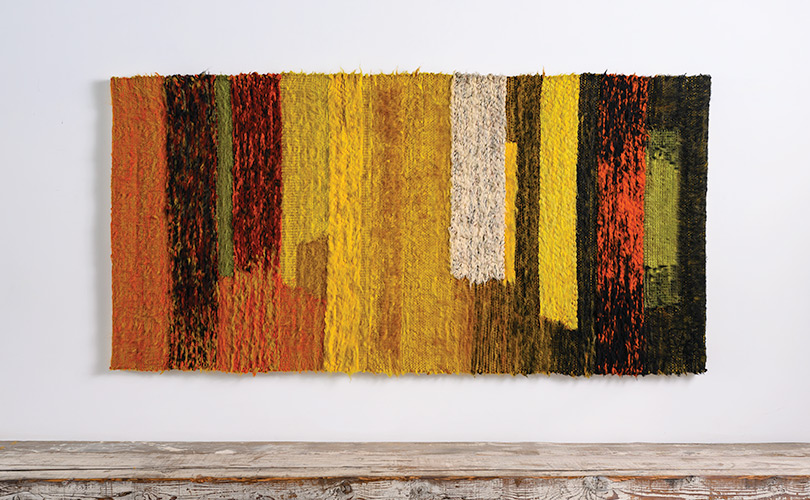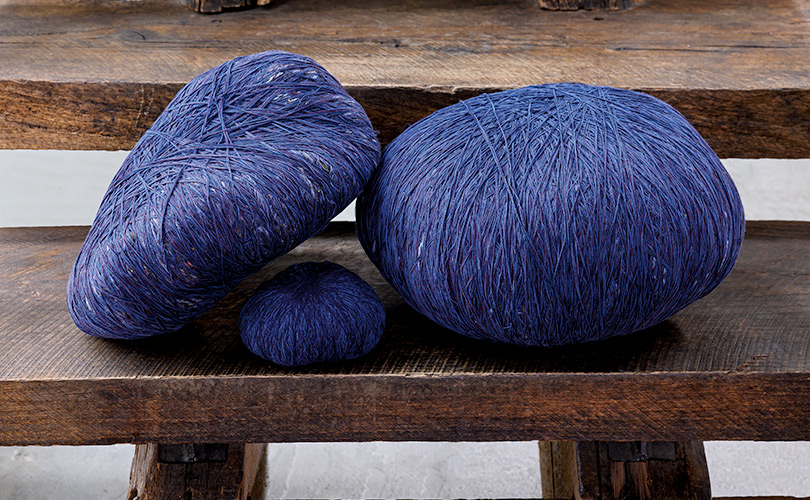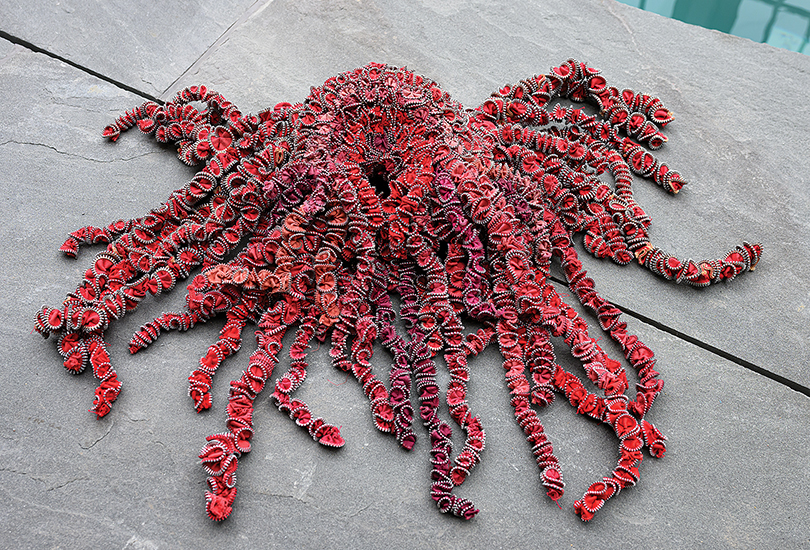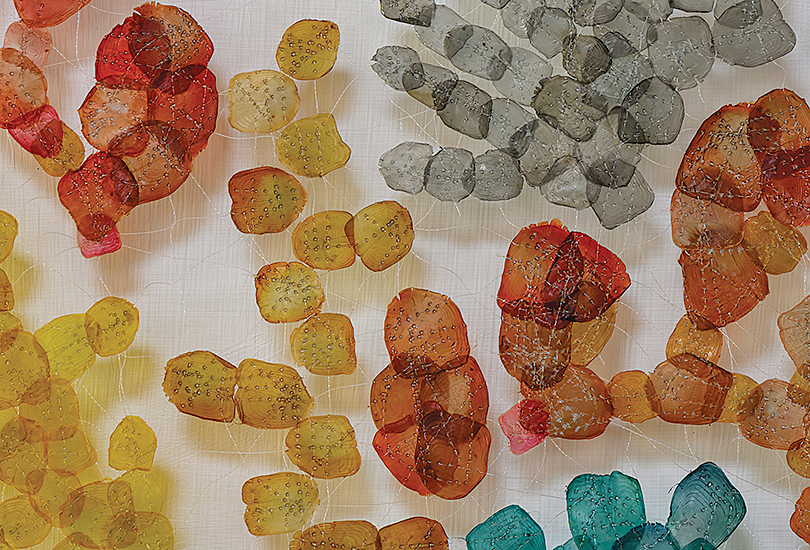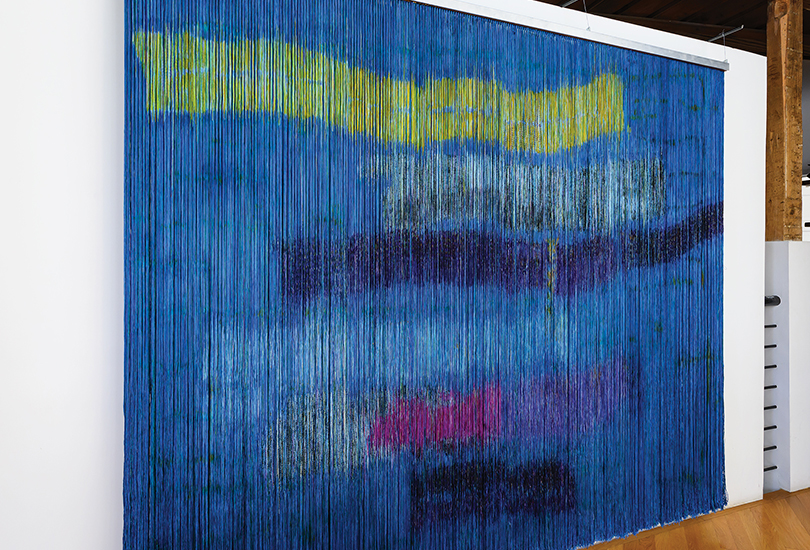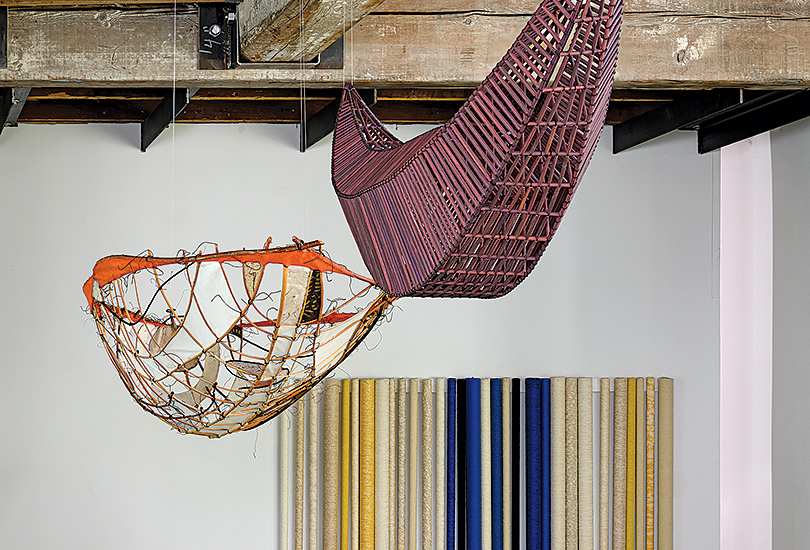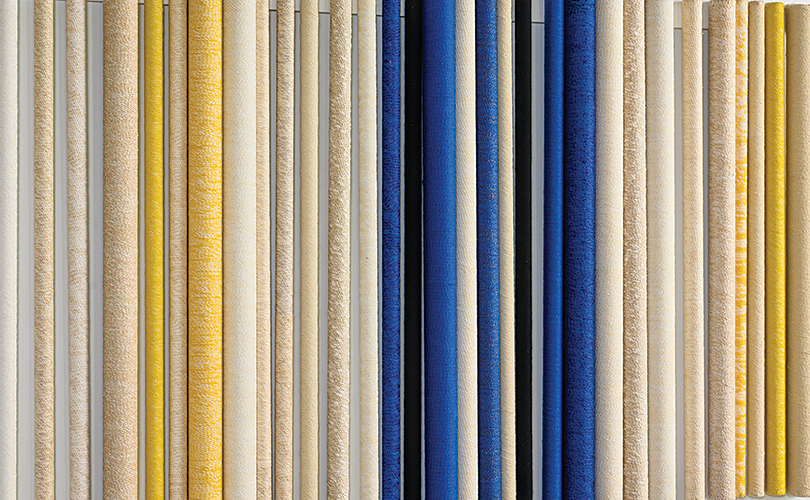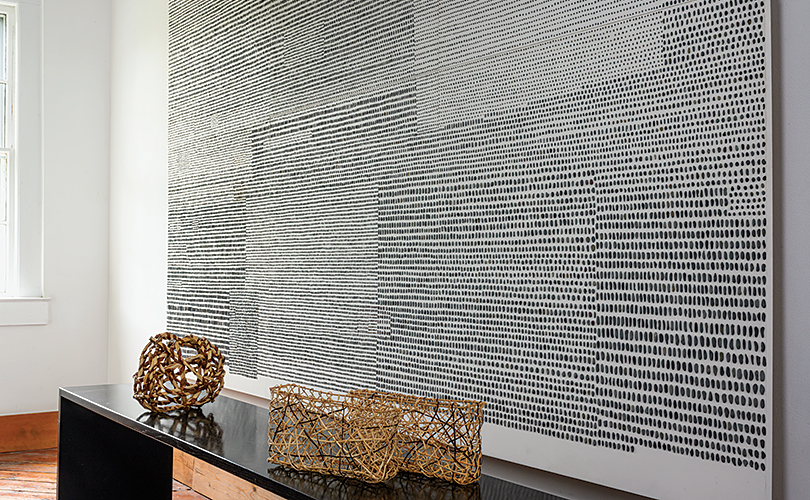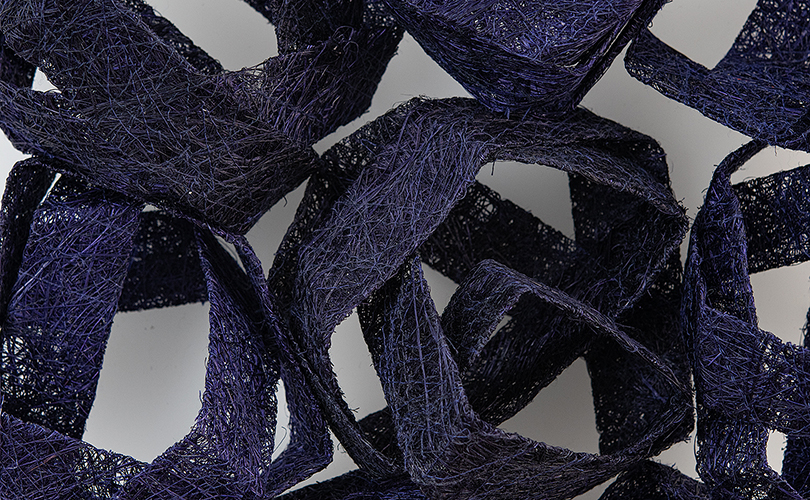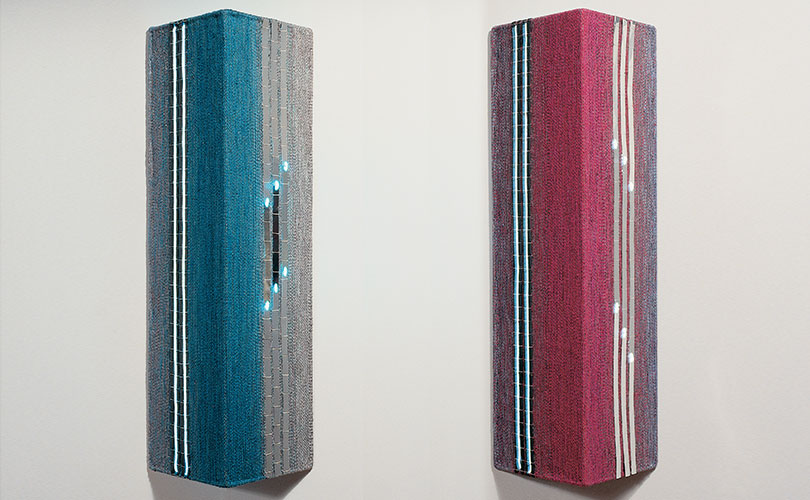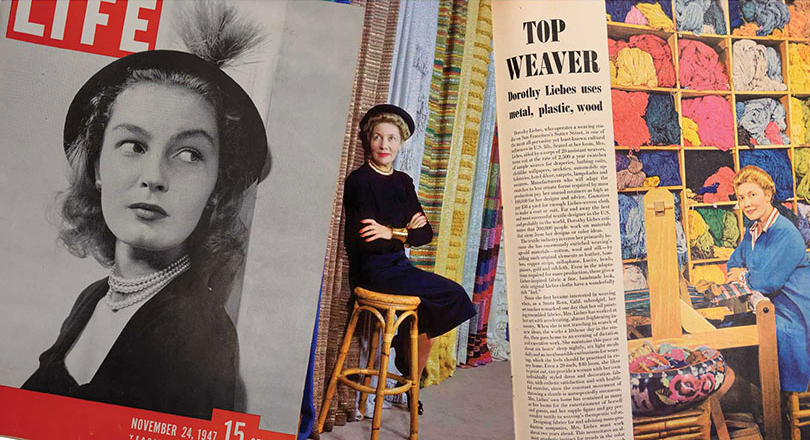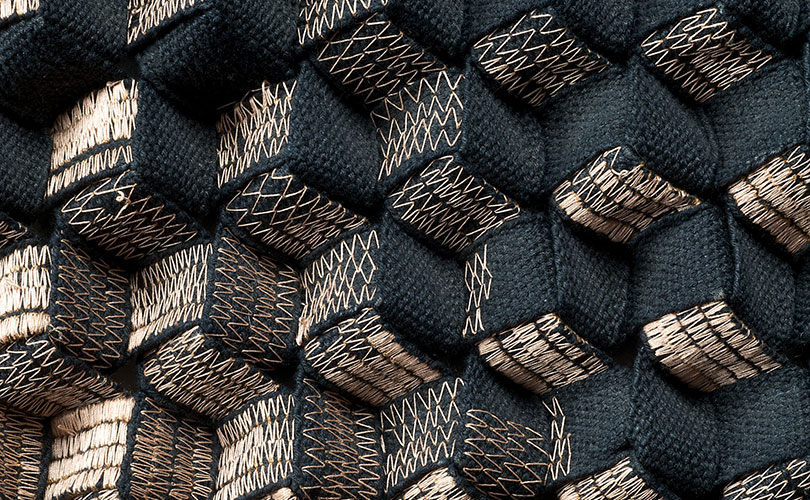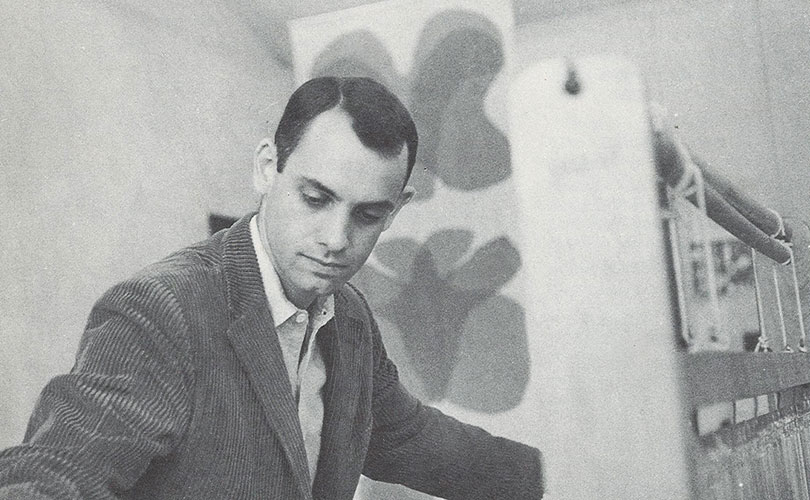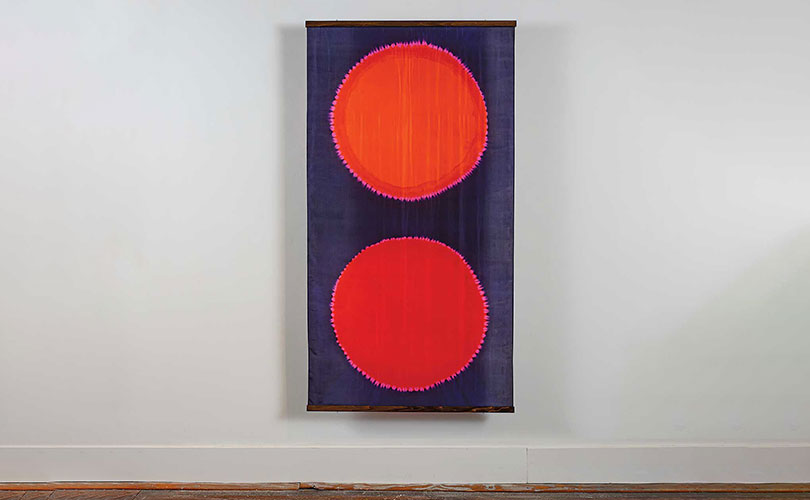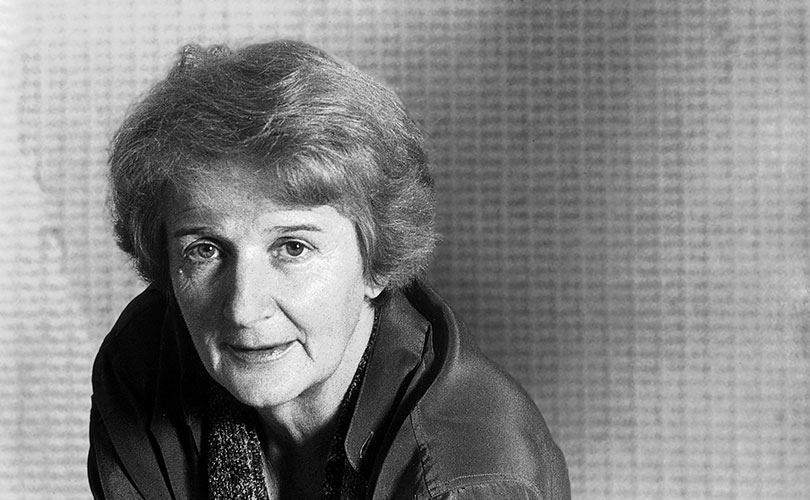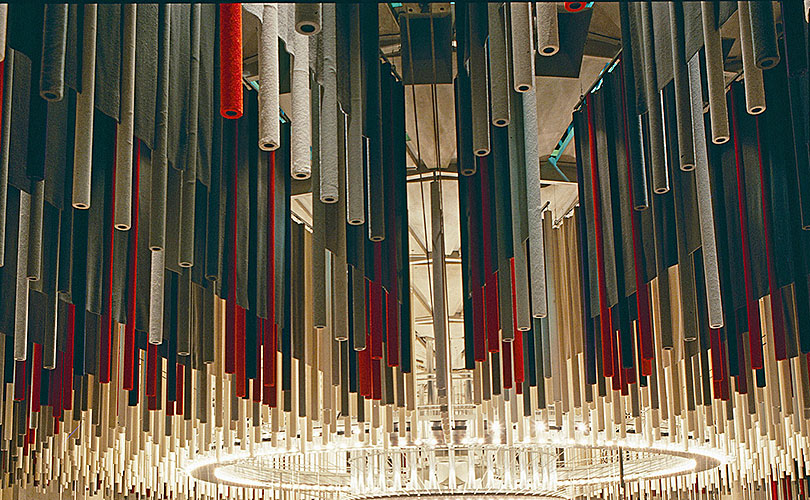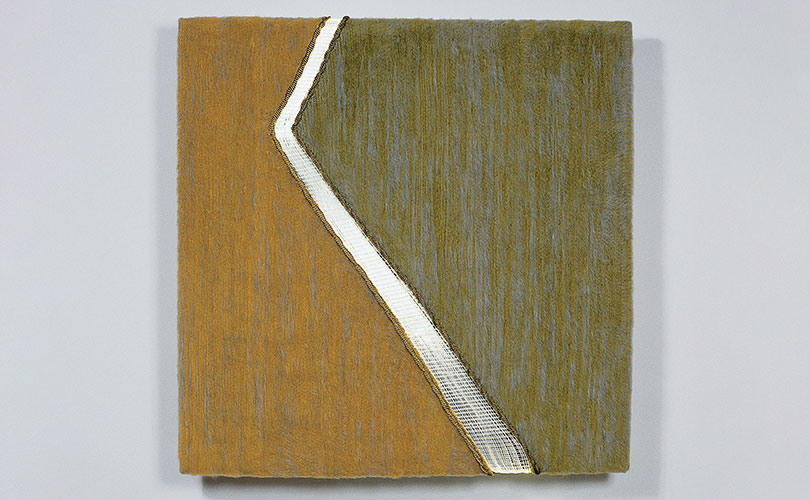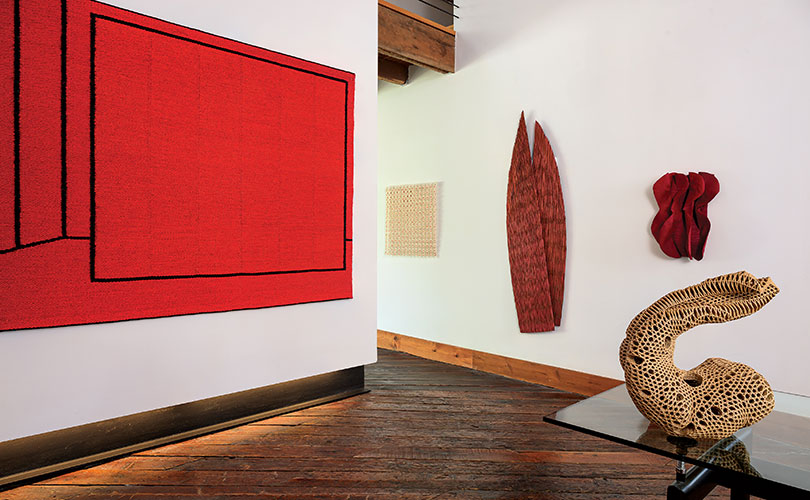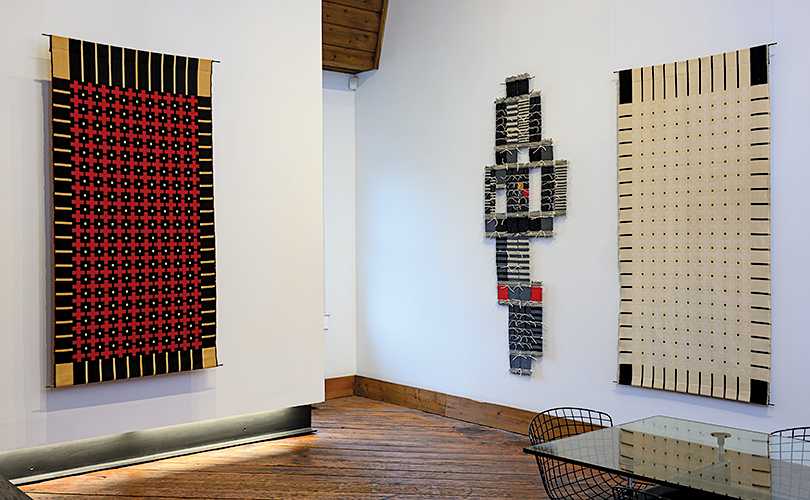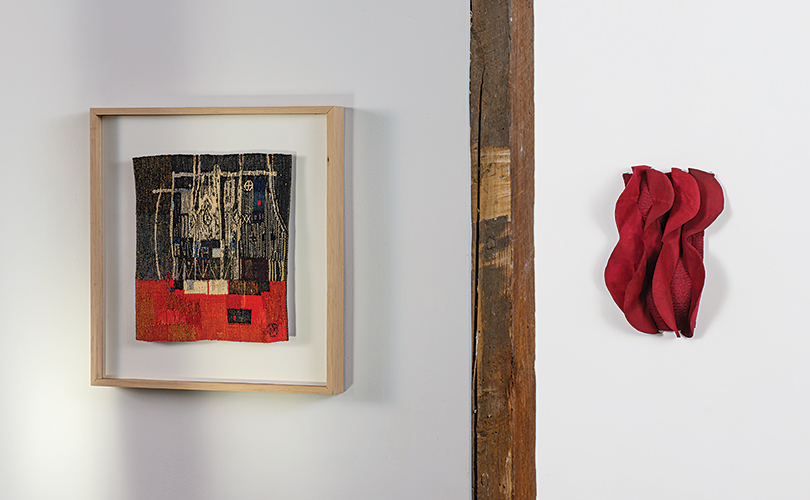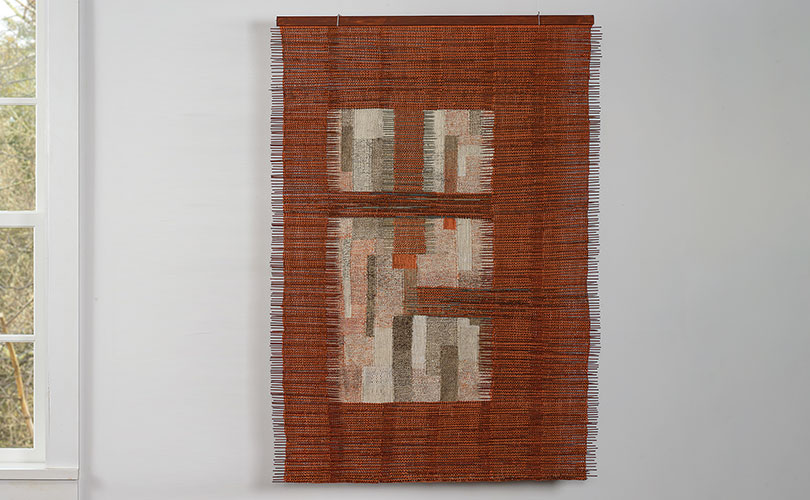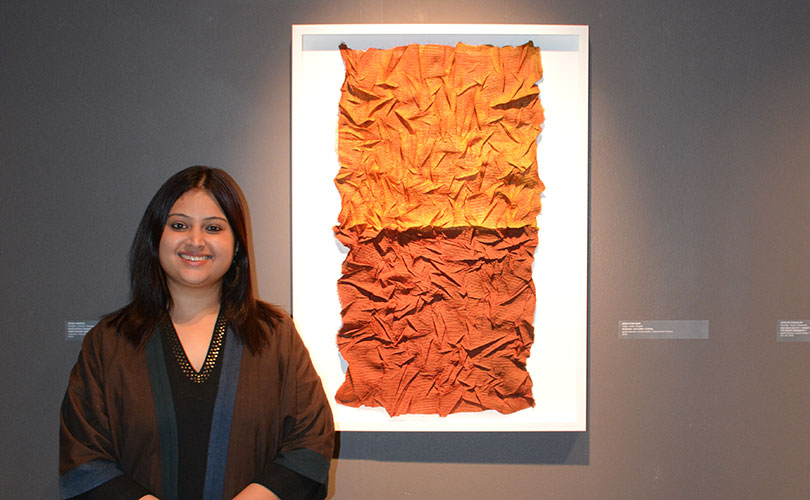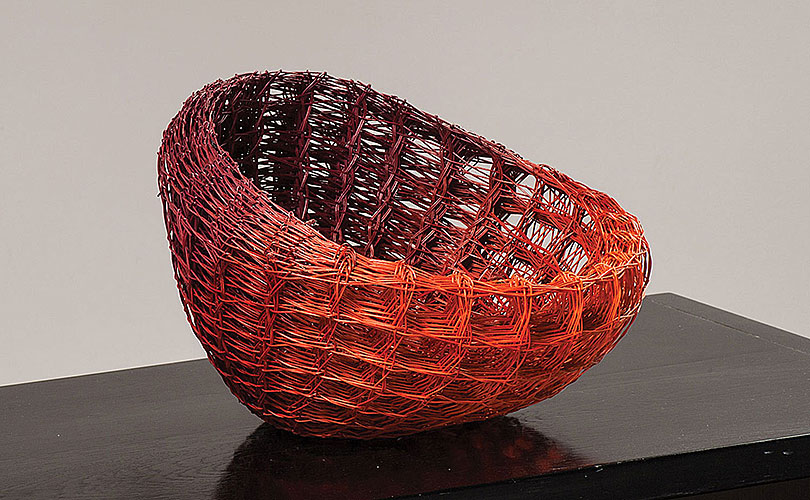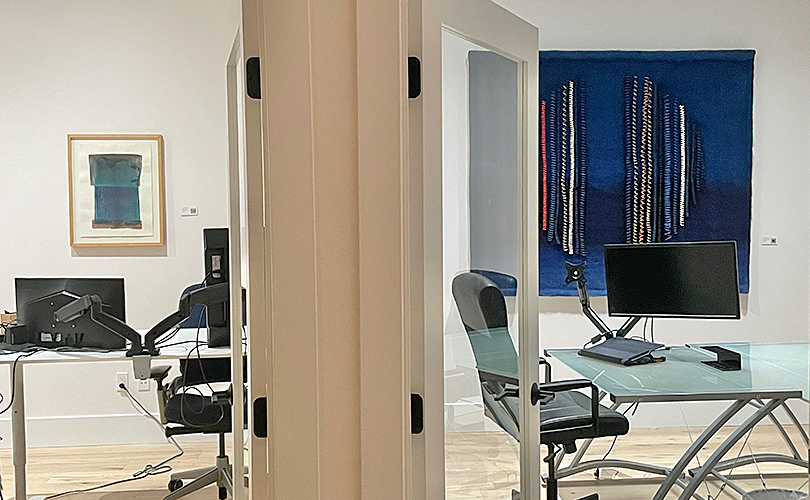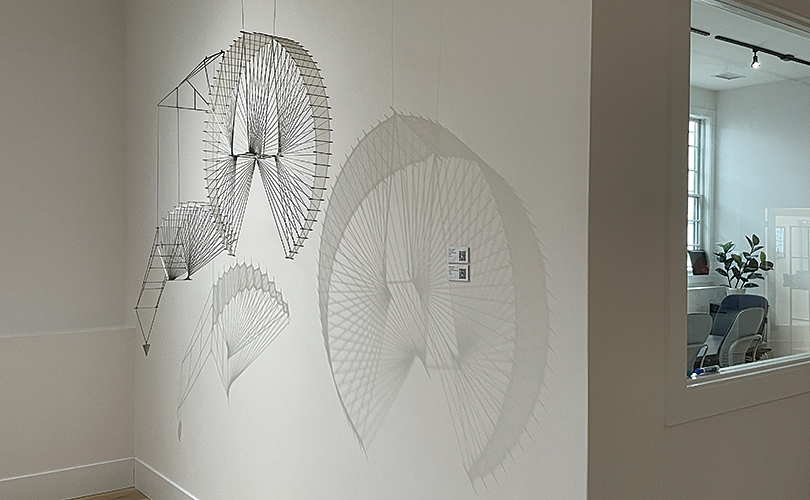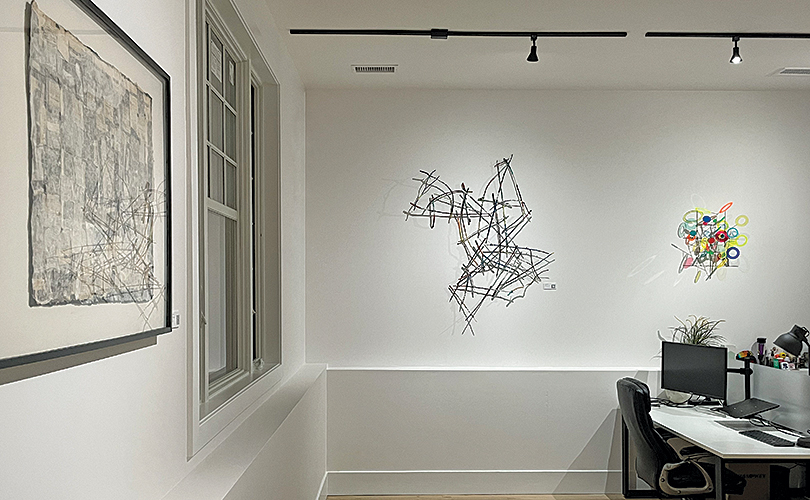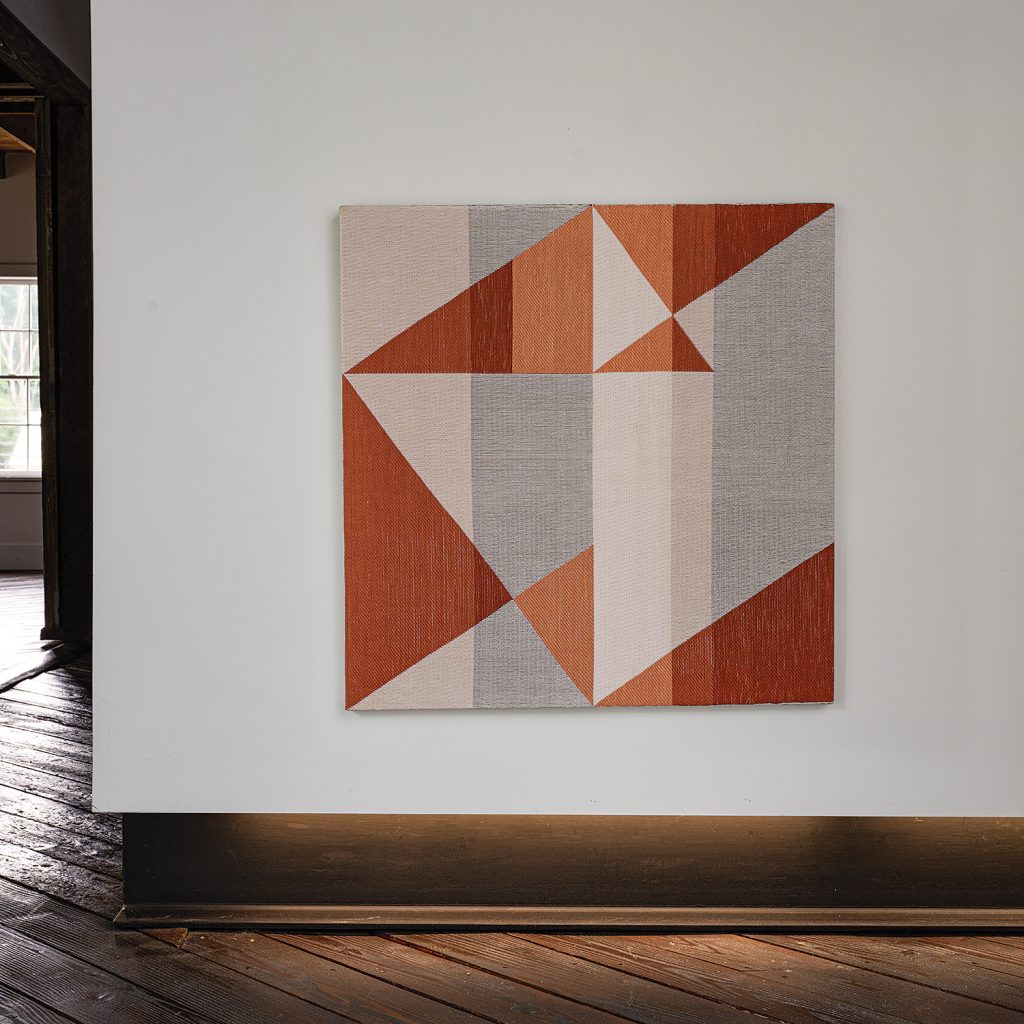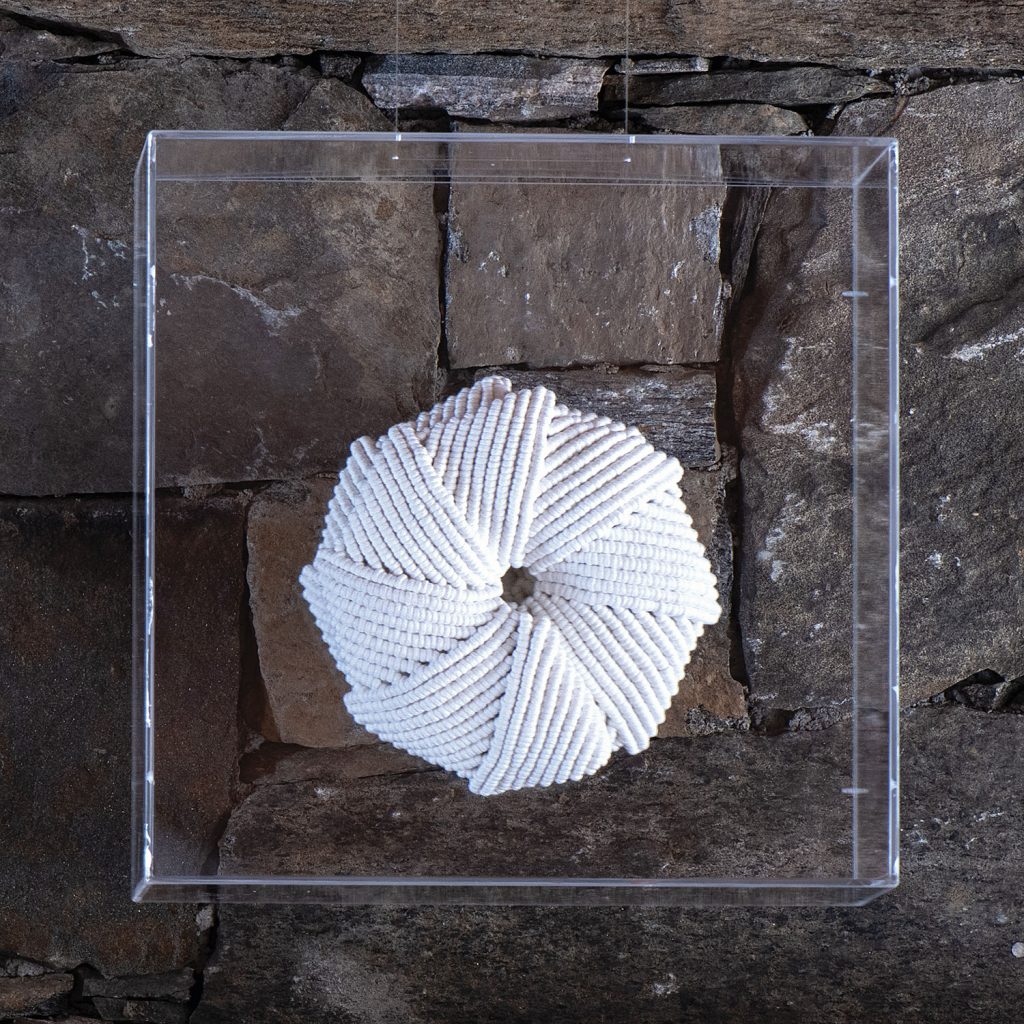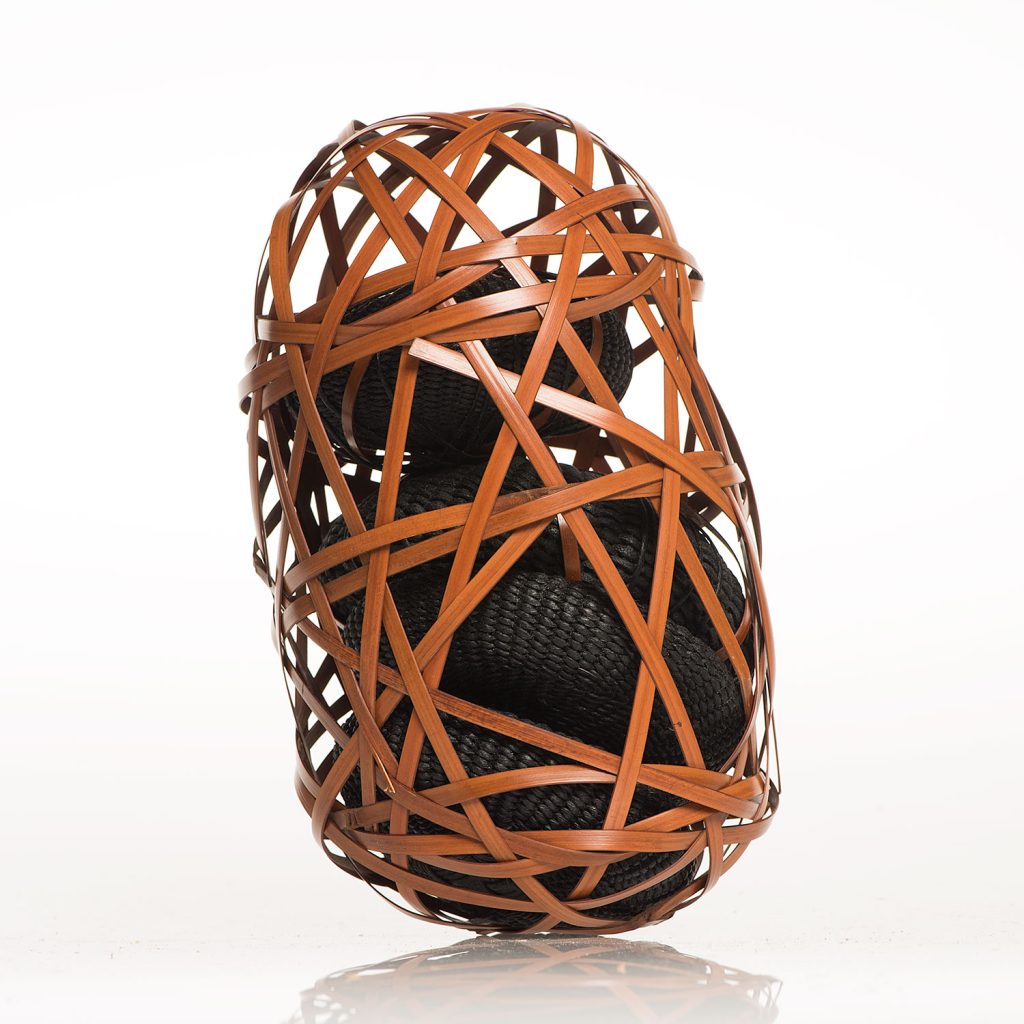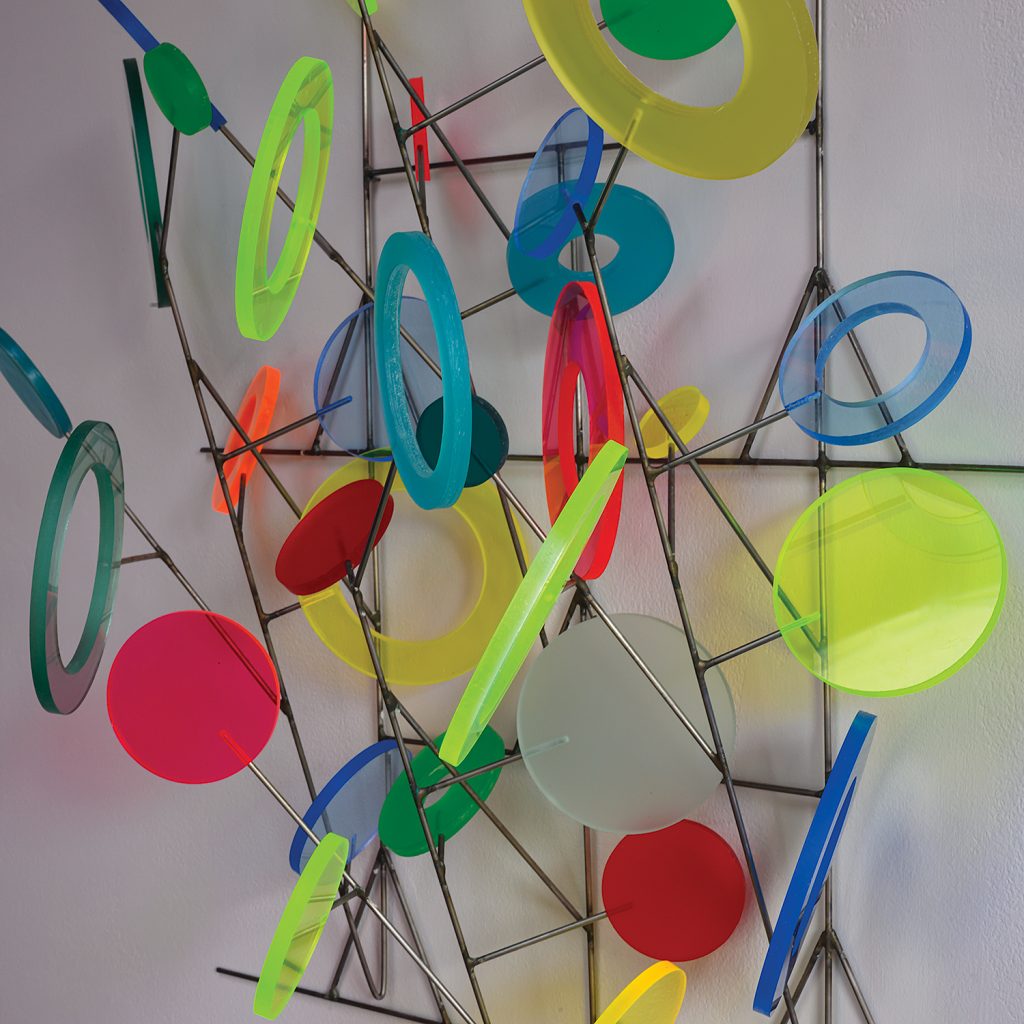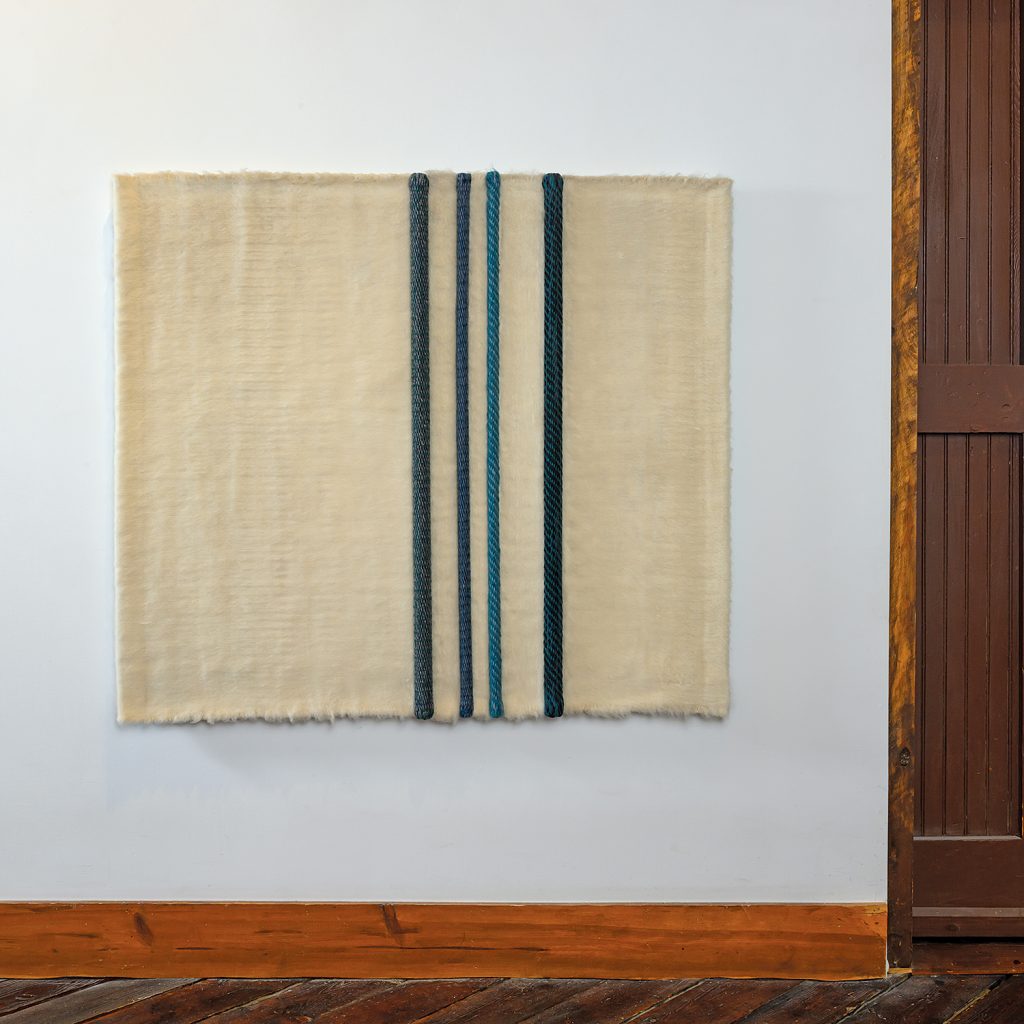For our Spring 2025 Art in the Barn Exhibition, Field Notes: an art survey, we’ve taken an expansive look at the fiber art field. We’ve checked in with artists we work with and invited a group of artists new to browngrottarts. In addition, we’ve gathered selected works by five pioneering artists — Sheila Hicks, Masakazu Kobayashi, Mariette Rousseau-Vermette, Ed Rossbach and Kay Sekimachi.
Some 60 years ago, artists begn making works that transcended our existing concept of textiles. While based on traditional techniques, these works, collectively known as fiber art, incorporated metals, minerals, and many other materials in addition to natural and synthetic fibers. For the first time, textiles came off the wall, expanded from two to three dimensions and into the surrounding space. The five artists we will include in Field Works, were not just pivotal in the emergence of contemporary fiber art in the 60s and 70s, but significant contributors to the art form’s current popularity.
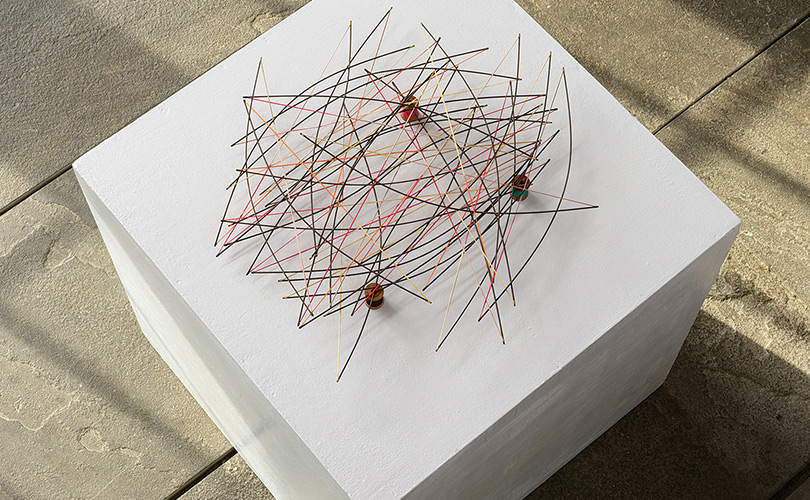
Kobayashi’s work was the subject of a major retropsective at the National Museum of Modern Art, Kyoto, Japan in 2024 and Hicks’s work was, most recently, featured in a major exhibition in two German museums, Josef Albers Museum in Bottrop and the Kunsthalle Düsseldorf, earlier this year. Rousseau-Vermette’s work will be the subject of major retrospective at the Musée National des Beaux Arts du Québec (MNBAQ) in Canada in 2026. And, you can see works by Hicks, Rosshbach, and Sekimachi in Woven Histories: Textiles and Modern Abstraction at the Museum of Modern Art in New York beginning next week and work by all five in Field Notes: an art survey, at browngrotta arts in Wilton, CT, May 3rd through the 11th.

Renowned fiber sculptor Sheila Hicks began creating innovative textile works in the 1950s. She studied painting with Josef Albers at Yale, and studied weaving in Mexico and Chile. Ball-like forms and “boules” are a motif to which Hicks repeatedly returns. The core of these forms, as in the case of Family Evolution, featured in Field Notes is often formed from garments that have previously belonged to the artist’s friends or family. They hold memories for Hicks, who refers to them as her memory balls. The personal aspect is intentional.
Masakazu Kobayashi, (1944-2004) was an early actor in contemporary fiber art. He first studied lacquerware at Kyoto City University of Fine Arts (later Kyoto City University of Arts) but, according to the Kyoto Musuem of Modern Art, “it was “Encounter with a Single Thread,” which he made while working at Kawashima Textiles Company, that spearheaded a series of works in which he dangled, stretched and unravelled yarn to create three-dimensional pieces.” Bow ’86 is featured in Field Notes. Made of silk, rayon, aluminum, and wooden thread spools, the work continues the artist’s exploration of the bow — a shape he created by bending aluminum bow space wilth tension held with silken thread. The bow explorations embody the equilibrium he sought in his work between his capacity as a creator and the energy of the world around him.

Born in Trois-Pistoles, Québec, Mariette Rousseau-Vermette (1926 – 2006) received her training at both the École des beaux-arts du Québec and at the Oakland College of Arts and Crafts, in California where she worked in Dorothy Liebes’s studio in San Francisco. She married Claude Vermette in 1952. The couple travelled extensively in Europe and Asia, allowing Rousseau-Vermette to broaden and deepen her understanding of different tapestry techniques. For four decades, she created luminous tapestries and sculptures for collectors and commissions throughout Canada and the US, including for the Canadian Broadcasting Corporation, the Canadian Chancery, Exxon Corporation and the Kennedy Center in Washington, DC (a curtain gifted by the Canadian Government). Reflets de Montréal, included in Field Notes, is a sumptuous early work from 1968 made of wool that Rousseau-Vermette sourced for its lustrous qualities.
All three of these artists, Hicks, Kobayashi, and Rousseau-Vermette, exhibited works at several of the prestigious International Tapestry Biennials in Lausanne, Switzerland which were organized from 1962 to 1995.
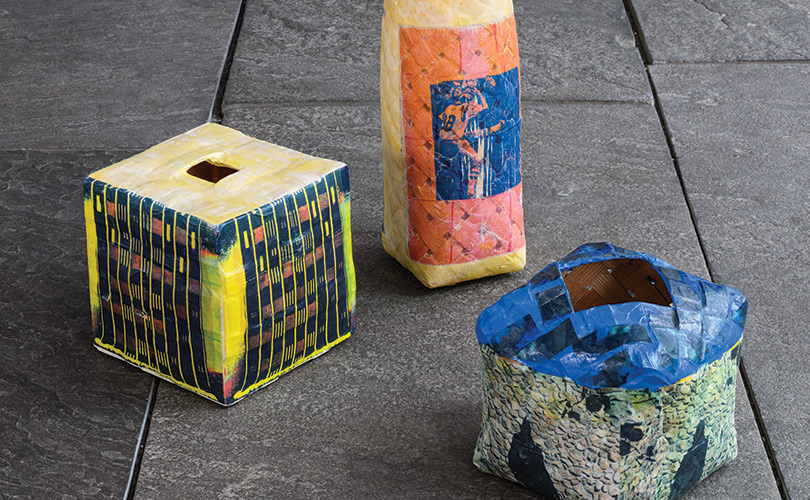
Ed Rossbach and Kay Sekimachi were both living in Berkeley, California in the 60s and 70s, which was an incubator for contemporary fiber arts. As a faculty member at the University of California, Ed Rossbach (1914 – 2002) was a major force spurring these explorations. The Museum of Arts and Design in New York, New York described Ed Rossbach’s importance: “Rossbach was an imaginative and adept weaver, mastering ancient techniques and innovating with new and unorthodox materials, such as plastics and newspaper. He is considered by many to be the pre-eminent influence in the rise of basketry as a sculptural art form. In addition, Rossbach is known for incorporating unconventional imagery, including pop culture references.” Numerous artists from Diedrick Brackins to Marvin Lipofsky to Gyöngy Laky claim him as an influence. In Field Notes, Punt, one of Rossbach’s pop culture-inspired works will be exhibited. A resale work, Punt features a football kicker in bright colors. The other works included, Poncho and Wyoming, also feature intriguing — South American textile patterning and an image of gravel from the West.
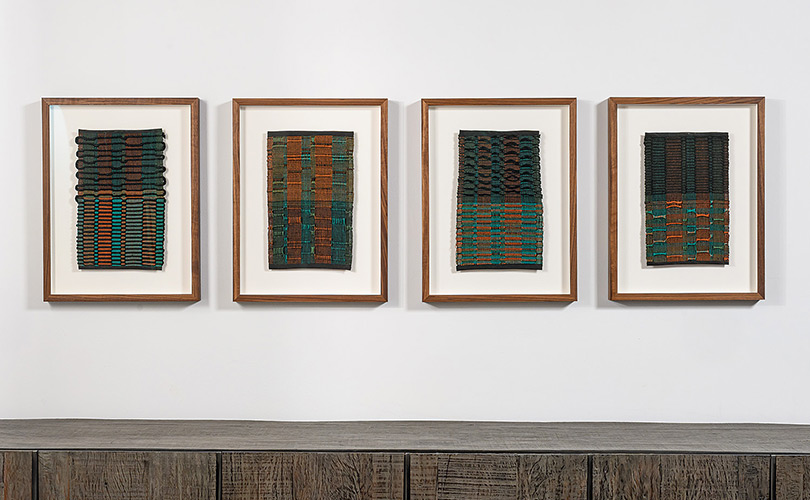
Kay Sekimachi is recognized as a leader in the resurrection of fiber and weaving as a legitimate means of artistic expression. She is known as a “weaver’s weaver” for her unusual use of a 16-harness loom in constructing three-dimensional sculptural pieces. In the early 1970s she used nylon monofilament to create hanging quadruple tubular woven forms in an exploration of space, transparency, and movement. She attended the California College of Arts and Crafts (CA), where she studied with Trude Guermonprez, and at Haystack Mountain School of Crafts (ME), where she studied with Jack Lenor Larsen. In Field Notes, very significant early works that Sekimachi made in the 1950s while studying with Trude Guermonprez, Samples: Summer Session with Trude Guermonprez, will be on view. Sekimachi credits Guermonprez with empowering her through her style of teaching, which emphasized individual creativity and curiosity.
As Aby Mackie, another artist in Field Notes, observes: “The field of fiber art is currently experiencing a profound shift, gaining recognition as a respected medium within contemporary art. This growing appreciation affirms textiles’ versatility and expressive potential, establishing it as a powerful medium for storytelling and innovation in the current art world.”
Join us May to explore that potential!
SCHEDULE YOUR VISIT
Exhibition Details:
Field Notes: an art survey
browngrotta arts
276 Ridgefield Rd
Wilton, CT 06897
May 3 – 11, 2025
Gallery Dates/Hours:
Saturday, May 3rd: 11am to 6pm [Opening & Artist Reception]
Sunday, May 4th: 11am to 6pm (40 visitors/ hour)
Monday, May 5th through Saturday, May 10th: 10am to 5pm (40 visitors/ hour)
Sunday, May 11th: 11am to 6pm [Final Day] (40 visitors/ hour)
Safety protocols:
Reservations strongly encouraged.
No narrow heels please (barn floors)

















